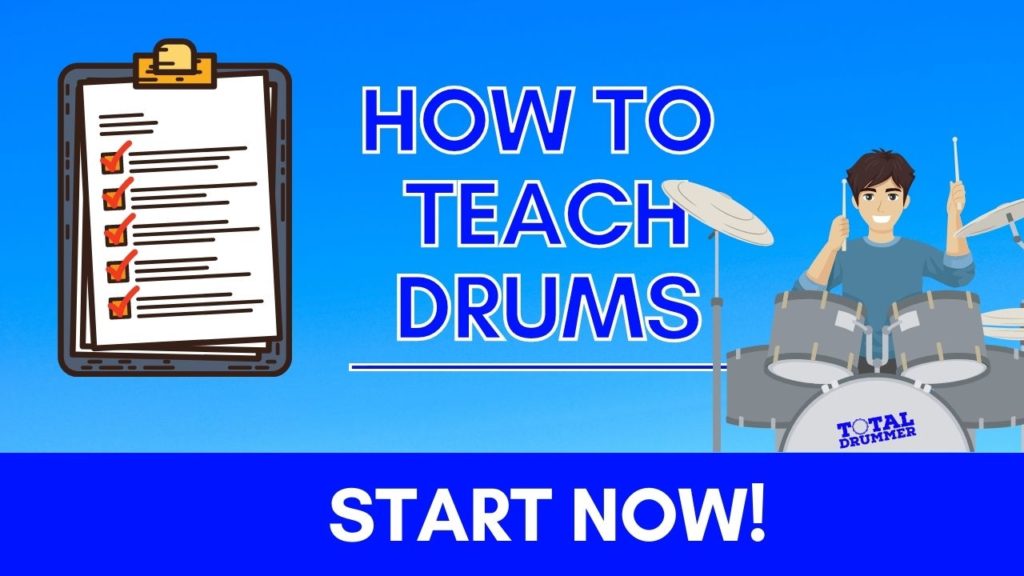Drum Teaching: Tips and Techniques for Success
How do you get started as a drum teacher?
Drum Teaching: Tips and Techniques for Success
Drumming is one of the most popular instruments out there, and for good reason. It’s fun, energetic, and provides a great workout for the arms and legs. As a drum teacher, you have the opportunity to help students learn and develop their skills.
[REMINDER]: Have you booked your free drum teacher training yet? If not click here.
Here are some tips and techniques for successful drum teaching.
- Establish Goals
Before you start teaching, it’s important to establish goals with your students. Ask them what they want to achieve with their drumming, whether it’s playing in a band, improving their technique, or simply having fun. Once you know their goals, you can tailor your teaching to meet their specific needs.
- Develop a Curriculum
Once you have established goals with your students, it’s time to develop a curriculum. Break down the various techniques and skills they need to learn into manageable steps. Create exercises and practice routines that will help them develop their skills gradually. Remember to keep the lessons fun and engaging, as this will help students stay motivated.
- Focus on Technique
Drumming requires a lot of physical coordination, so it’s important to focus on technique. Teach students proper grip and stick control, and work on developing their hand and foot independence. Show them how to use their wrists and fingers to create different sounds on the drum kit. Use visual aids and demonstrations to help students understand the proper techniques.
- Incorporate Music Theory
Music theory is an important aspect of drumming, as it helps students understand the structure and organization of music. Teach them how to read drum notation and rhythm charts. Introduce them to different time signatures, and show them how to count beats and rests. This will help them develop their sense of timing and rhythm.
- Encourage Practice
Drumming requires practice, and lots of it. Encourage your students to practice regularly, and provide them with exercises and routines to help them develop their skills. Show them how to practice effectively, and give them feedback on their progress. Praise their successes and offer constructive criticism to help them improve.
- Be Patient and Supportive
Learning to play the drums can be challenging, so it’s important to be patient and supportive with your students. Encourage them to ask questions and be open to their feedback. Celebrate their successes and help them work through their mistakes. Remember that everyone learns at their own pace, so be patient and supportive throughout the learning process.
In conclusion, drum teaching is a rewarding and fulfilling experience. By establishing goals, developing a curriculum, focusing on technique, incorporating music theory, encouraging practice, and being patient and supportive, you can help your students develop their skills and achieve their goals. So get out there and start teaching!
If you want a simple action then click here to join the FREE drum teacher training that will make the whole process much clearer for you.
FREE Training to Start Teaching Drums Below
You can start your journey as a drum teacher right here right now. This totally free course will give you everything you need to make it happen.
We’ll cover the main aspects you need to put in place to successfully do this and there are a few surprises.
You’ll learn:
- The best time to start teaching drums
- How good you need to be at drumming to teach it
- How to get students
- How to set up the business aspects
- Why you DO have what it takes
- How to be better than your competition
- How to get the marketing right
- The big mistakes that most drum teachers make but you can avoid
So click the big RED button below. Let’s get started!

